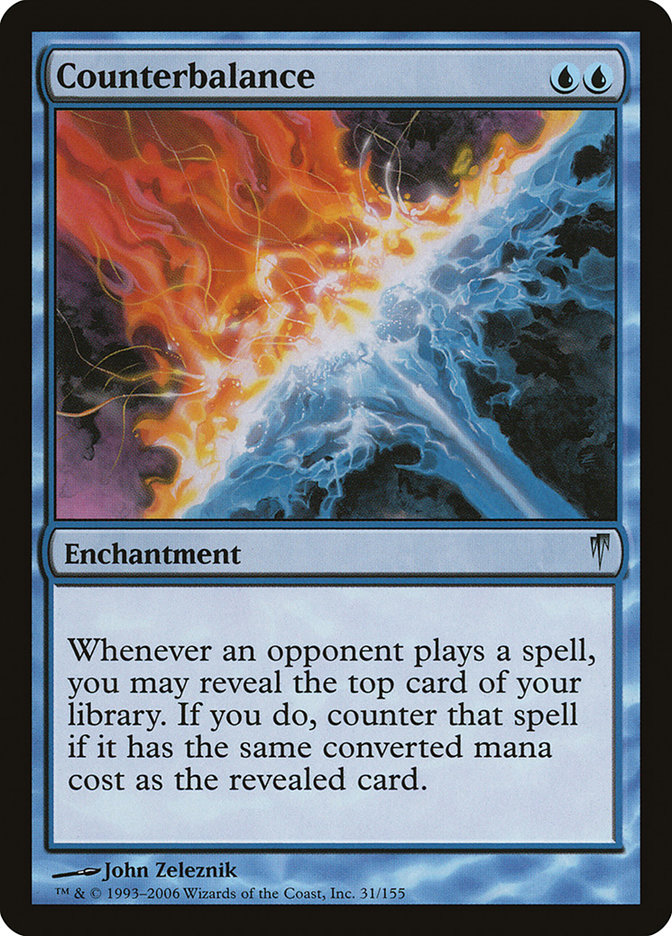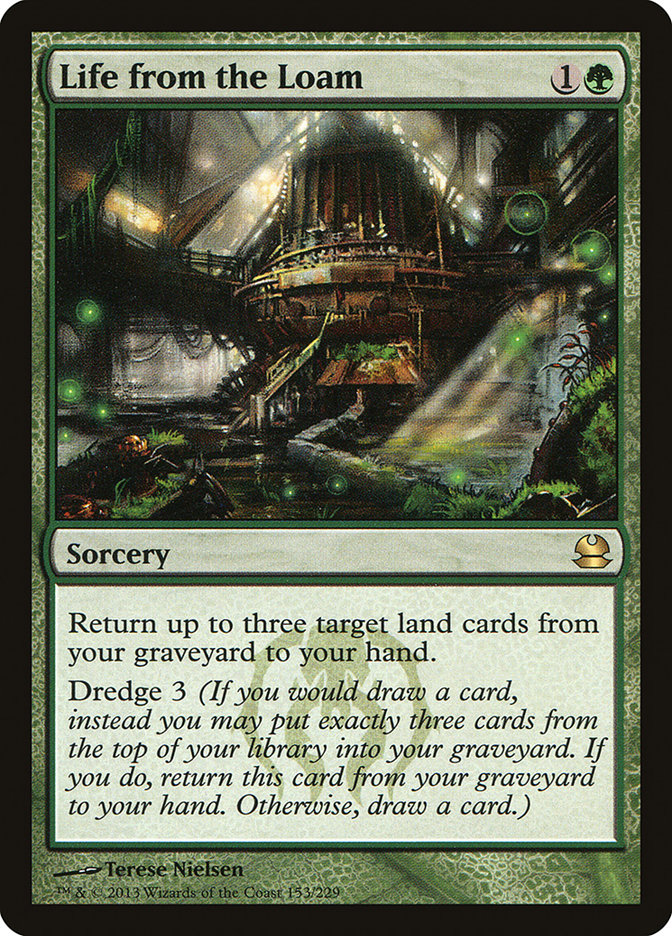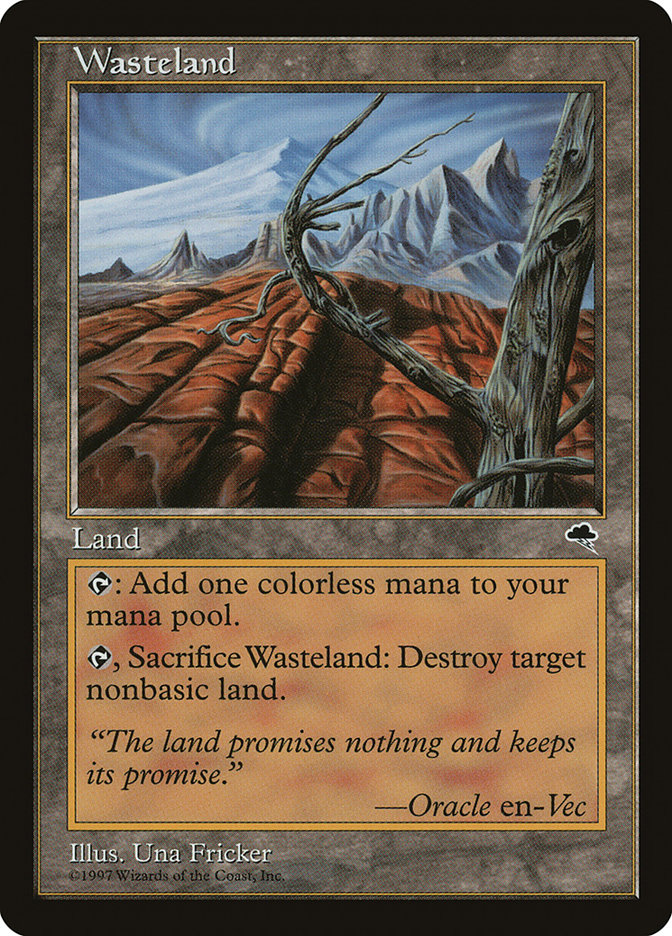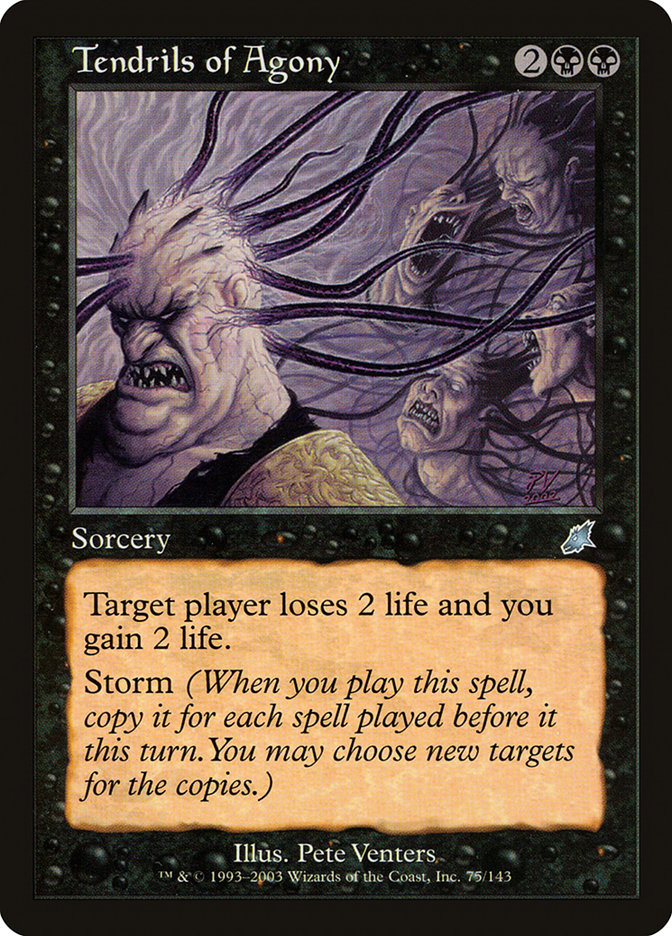I first started playing Legacy with my Extended-legal Elves deck, Temple Garden and all. Mystical Tutor was legal, but no one really played it locally. As a result, Elves was good enough to win. A lot. After a while, I branched out into other decks and decided to focus on a Legacy Grand Prix. I picked up Storm, played a lot more, picked up a lot of knowledge about the format, and then played a lot more.
Just over a year ago, I moved from Ann Arbor to Boston. As a result, I just stopped playing Legacy. I committed to commentate an event instead of attend the one Legacy Grand Prix on this continent in that time frame, I opted to attend Grand Prix over subsequent Legacy Opens, and I discovered the local Legacy events were eight people on a good day. I’ve played basically the same Storm list at four random 40-person events, with my deck choice being 100% out of convenience and familiarity and 0% on testing.
I’m going through my usual extensive preparation for Grand Prix Washington DC (which according to locals is actually GP Dulles Airport). I will be starting fresh, with a year of deck development separating me from the actual metagame. I have Legacy Champs in Philadelphia to burn, which will help, but I will be playing a large number of test games to narrow down an even larger number of options.
After some quick recon, here are my thoughts to focus my post-Dublin actions.
Thought 0: Legacy is much more defined than everyone thinks.
This is the baseline of everything else I’m going to conclude about the format.
In the past the Legacy metagame was a giant mess—lots of random decks and even within defined decks lots of random card choices.
Now the format is oddly focused. The last three or four years of sets have infused a large number of "four-of" level playables into the format, eliminating a lot of the oddball decisions. Previously we saw this with Tarmogoyf, where the format went from "which 2/2 should I play?" to "my first four two-drops are Tarmogoyfs, now what?" Stoneforge Mystic; Delver of Secrets; Jace, the Mind Sculptor; and Deathrite Shaman (to name a few) replaced a previously wide spread of cards.
The rise of the "60 good cards" decks also punished people playing more random card choices. Turns out the best way to fight a wide spread of individually powerful cards is either make a consistent linear deck or just also play a bunch of good cards. On the unfair side, the printing of Emrakul and later Griselbrand squeezed out a lot of the slower or less reliable combo decks in favor of the easy wins of Show and Tell.
I’m not saying the format is narrow or that unknown decks aren’t good. I’m just saying the odds of being able to figure out the vast majority of your opponent’s 75 early in the match are much higher.
Here is a layout of the major decks in the format approximately from most to least "degenerate." Anything bolded has a relatively major presence in the metagame.
Combo
Storm: The Epic Storm, Ad Nauseam Tendrils
Show and Tell: Reanimator, Omni-Tell, Sneak and Show
Elves
Mono-Red Painter
Metalworker
Dredge
High Tide
Burn
Tempo
Delver: Grixis, RUG, U/W/R
All Dudes All Day
Merfolk
Death and Taxes
Maverick
Goblins
Card Advantage-Based Midrange
Stoneforge Mystic: W/B or Team Italia (no blue), Stoneblade and Deathblade (blue)
Cascade Midrange: BUG, Jund
Control
U/W Miracles
Big Game Non-Magic
Lands
12 Post
If we want to simplify this further, we get to the following things you have to beat:
Stoneforge Mystic
Cascade Card Advantage backed by Thoughtseize
Delver
Show and Tell
Storm
Small High-Value Creatures (usually with Vial, sometimes with Glimpse)
Six targets. Not hard at all.
Note: Yes, I realize Deathblade has fallen off the map in terms of Top 8 performances. I still think that a W/U/x midrange Stoneforge Mystic deck will be relevant to test against, and Deathblade is the most updated list.
Thought 1: Classic control is in a rough spot.
You have to answer the following things:
– Piles of single-card game winners, both creatures and planeswalkers, backed by discard or counters
– Stacks of two-for-ones, including generic answers to permanents and discard
– Dark Ritual
– Aether Vial
– Wasteland
The issue: lots of the cards that are good versus one-for-one dudes are bad versus Dark Ritual and two-for-ones. Most of the true hate cards that are good versus Dark Rituals don’t overlap against Show and Tell. Most of the interactive cards against combo are liabilities in grindy matchups and against Aether Vial. Spreading your mana for the best cards makes you fold to Delver of Secrets.
There are a few things that can bridge gaps. Counterbalance handles Storm, Show and Tell, and Delver fairly well. Punishing Fire handles Aether Vial decks and portions of the Cascade and Delver decks. But you will always have dead cards in an answers deck. What card is good against Storm and Death and Taxes? Omni-Tell and Shardless BUG? When all of these decks require all of your cards to be relevant and even generic answers like Force of Will and Thoughtseize are punished, all that’s left to do is be proactive in some way.
If you want to be the control deck in this format, you either have to sacrifice a matchup or give up being a "control deck." Play some proactive way to win, and then play some answers to the things that your win condition is bad against. A good example of both is 12 Post. You crush the fairer decks, play a suite of answers to Wasteland, and sacrifice the non Show and Tell combo matchups. In exchange, you wreck certain metagames.
Thought 2: Combo is on the slow end for this format.
Of the five major combo decks, only one is really trying to kill on turn 2: The Epic Storm. The rest can kill that early but aren’t really expecting to. Ad Nauseam Tendrils is the next fastest, aiming for a turn 3 kill. Both Show and Tell decks leverage the "mid" game capability of casting their enchantments. Elves combos off around turn 3 but is also content just grinding Wirewood Symbiote / Elvish Visionary advantage or firing off an early 10/10 Hydra.
What happened?
Deathrite Shaman happened. Reanimator and Lion’s Eye Diamond Dredge were the non-Storm turn 2 decks, and those decks do not want to see four maindeck hate cards. The other decks in the format also became more reliable and stopped handing out free passes to some of these deck’s worse hands. Slow dredges sometimes don’t cut it against Stoneforge Mystic, hands without Entomb can have issues with Karakas, etc.
People started mulliganing more against Goblin Charbelcher and similar decks. Blue decks also shifted towards Thoughtseize or Spell Pierce as opposed to Counterspell, removing some of the on-the-draw win percentage of the deck. On a similar note, other turn 2 combo decks like Hypergenesis proved less reliable than the cantrip and sol land heavy lists against the increasing amount of cheap disruption.
Thought 3: The graveyard is fairly open for business.
Of the prominent decks, only Elves, Deathblade, and the Cascade decks play Deathrite Shaman. Deathblade has been on a massive decline, and it looks like BUG could go that way soon as well. Storm does not play graveyard hate, Omni-Tell uses its sideboard for Cunning Wish, and Delver is typically light on it. Aether Vial decks are typically soft to degenerate things like graveyard interaction.
Basically, if you can beat combo with your graveyard deck and possibly beat a Deathrite Shaman, you should have a lot of easy wins.
Just be sure you actually are a graveyard deck and not another kind of deck that incidentally uses the graveyard without real gain. Think Reanimator, which still has issues with Thoughtseize and Spell Pierce.
My first pick here would be some kind of Loam strategy or Dredge. As for the first, I could see anywhere between 24 and 42 lands being right. All you need is some way to manage Deathrite Shaman, and fortunately Punishing Fire is an easy pick for the job. As for the latter, I would much rather play the manaless variety. I’ve seen too many games won against Lion’s Eye Diamond by pinning them between Force of Will and Stoneforge Mystic or some similar setup, and Manaless Dredge isn’t much slower with the addition of Balustrade Spy as an instant kill.
Thought 4: The Blood Moon trap has been sprung.
We recently watched StarCityGames.com own Reuben Bresler spread the news(ening) of nonbasic land hate. As a pure combo deck, Mono-Red Painter is unreliable at best. When you are both a two-card combo deck and a one-card combo deck, it gets a little easier.
Simply put, decks were not expecting a Blood Moon a month ago. The Cascade decks were on zero basics (maybe two in Jund), the Delver decks were on zero basics, and the Stoneforge Mystic decks were on zero basics (maybe two in Esper).
I predict that people will adapt to this. It might just be a matchup dependent mulliganing to Force of Will or better fetch-land management. It might be slotting in a basic or two. It might be sideboarding some Disenchants that serve double duty against both halves of the deck.
Blood Moon will still be good, but it won’t be good enough to carry the Painter deck in the same way as it did at that event.
Thought 5: Wasteland is at an all-time high and low.
Regardless of how much people adapt to Blood Moon, they have to push further to play around Wasteland.
First, the bad. Decks in Legacy are no longer as mana light as they once were. Deathrite Shaman is part of it, the addition of Ponder to more and more decks is another part, and people just wanting more lands is the rest. It’s not uncommon to see a midrange deck packing 23 lands and a suite of two-drop threats that land under a Wasteland.
The good news? People are playing a lot of expensive cards. Things that cost three or more get difficult to cast against Wastelands, and there is no shortage of Liliana of the Veils; Jace, the Mind Sculptors; and Shardless Agents in the format. Even Delver is moving up the curve with Geist of Saint Traft. Mana bases are also more stretched and can’t operate off multiple basics as well as they once could. Having just one to cast your Blood Moon answer is different than trying to get the right ones in play to cast your spells that cost a combined GUUBB. Even if they have one basic, a string of Wastelands can probably lock them out of the game.
I want to Stone Rain my opponent a bunch of times. Death and Taxes is probably the best at this because even though the current stock list has fewer Mangara of Corondors than past lists, it still has the full four Rishadan Ports and Aven Mindcensors to attack lands. Goblins is a little less dedicated to the cause, but again Rishadan Port it does a lot of good work. This is another thing that points towards Life from the Loam, as it’s hard to Wasteland people more than once a turn every turn for the rest of forever.
Thought 6: Storm lost a lot of the high-end incentive to play it.
I’ve championed Storm through a lot of rough times. I even lost playing for Top 16 at the Grand Prix where Mental Misstep was legal (what was I thinking?). Storm in the current metagame isn’t bad, but it doesn’t have the edges it once did.
One of the big reasons to play Storm was the large amount of easy matchups it had. Random creature decks, nonblue discard decks, midrange decks, and worse combo decks were the big freebies. Worse combo is gone thanks to Show and Tell (which now has Griselbrand instead of a random bad creature); Elves packs a lot more disruption; nonblue discard decks just added blue; and midrange decks, while still midrange, added blue. Random creature decks still exist, but they now maindeck four Thalia, Guardian of Thrabens.
I wouldn’t mind playing Storm for a ton of rounds against the field if I was just aiming to come out ahead, but I think if I am trying to be X-1-1 at the end of 15 rounds, I want to choose something with more solidly favorable matchups against the field.
On the other hand, I’ve regretted not playing Storm in every major event I’ve opted to play something else.
Day 0 Predictions & Summaries
I expect to play Grixis Delver, Life from the Loam, Elves, or Storm at this event. All of these decks do unique, powerful, and proactive things.
I can’t imagine picking up a midrange deck, especially when it appears the top tier is hostile to them and the fringe decks are capable of beating them.
The Oddball Prediction: If there is any card I’m scrambling to find the day before the event, it will be Candelabra of Tawnos.
Finally, I’ll be sad that I don’t get to really play the format again for another year. I’m glad the East Coast is getting all the love here, but it’s actually a full calendar year between non-European Legacy Grand Prix.
Notice my common theme between this and Modern. More Eternal formats please?






